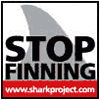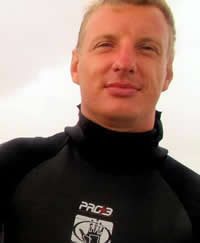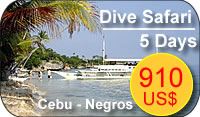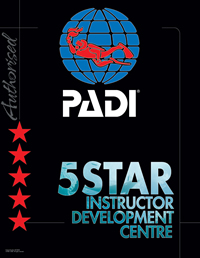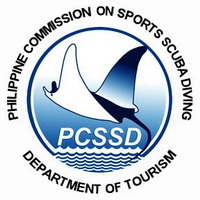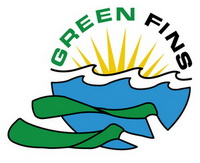Dive Palau from Cebu
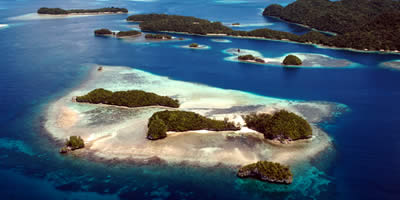 Palau offers some of the best diving you can find in the world.
Palau offers some of the best diving you can find in the world.
Especially big fish like mantas, rays, barakudas, napoleon fish and others, you name it, it's there.
Update 08/08/07: Blue Corner Elected Best Dive Spot In The World!
World's 10 best scuba spots
By Anna Vander Broek, Forbes Traveller, 8 August 2007
1. Blue Corner, Palau, Micronesia
Blue Corner, Palau, teems with all manner of sea life—from turtles to barracudas and sharks. There are WWII wrecks, too. The current is fairly strong here, and most divers use a reef hook so you can "just kinda hang out and watch the action in front of you," says Tom Morrisey. "If you're lucky you'll see lots of sharks feeding naturally right in front of you… a lot people call it the best dive in the world." The best time to dive Palau is from October to early June.
Source :Forbes Traveller, 8 August 2007
Dive packages to Palau
For Cebu / Palau package inquiries: use quick contact form or send e-mail to moc.ardevas@ofni
Here is more on Palau:
Scuba Diving in Palau
From Wikipedia, the free encyclopedia
All text is available under the terms of the GNU Free Documentation License.
The majority of Palau's dives are boat dives, conducted either from large (45'~60') liveaboards or, more often, from relatively narrow, fast day-trip boats. The latter boats are typically 6 to 8 feet wide, monohull boats with center pilot consoles and a pair of large outboard motors. Boat captains are most often Palauan or American, and dive guides tend to be Palauan, American, Australian, Japanese, Korean, Philippine, Taiwanese, or German.
Dive site protection has become an important priority for the Palauan government. Toward this end, the government has installed and maintains boat moorings at the most common dive sites. The government will often send staff to check that all tourist divers mooring at one of these sites are carrying a receipt/card to prove that they have paid a usage fee that goes directly toward maintaining the dive sites. Divers should expect to be charged this usage fee at the start of the dive vacation, and should keep proof-of-payment with them whenever they dive in Palau's waters.
Many of the dives end in a "flying pick-up", in which the boat captain follows the divers' trail of bubbles to anticipate where the divers will surface, rather than simply mooring at a fixed endpoint and waiting for the divers. Although finding the bubbles or divers at the surface is nearly always easy, it's common practice for diveshops to distribute free "safety sausages" (inflatable yard-long balloons) to each buddy-team so that in rough water, divers at the surface can easily be seen from a distance.
More Info on Palau
From Wikipedia, the free encyclopedia
All text is available under the terms of the GNU Free Documentation License.
Palau's most populated islands are Angaur, Babeldaob, Koror, and Peleliu. The latter three lie together within the same barrier reef, while Angaur is an Oceanic Island several miles to the South. About two-thirds of the population lives on Koror. The coral atoll of Kayangel is situated north of these islands, while the uninhabited Rock Islands (about 200) are situated to the west of the main island group. A remote group of six islands, known as the Southwest Islands, some 375 miles (600 km) from the main islands, are also part of the country and make up the States of Hatohobei and Sonsorol.
Climate
Palau enjoys a tropical climate all year round with an annual mean temperature of 82 °F (27 °C). Rainfall can occur throughout the year, averaging a total of 150 inches (3,800 mm). The average humidity over the course of the year is 82%, and although rain falls more frequently between July and October, there is still much sunshine. Typhoons are rare, as Palau is outside the main typhoon zone.
Environment
On 5 November 2005, President of Palau Tommy E. Remengesau, Jr. took the lead on a regional environmental initiative called the Micronesia Challenge, which would conserve 30 percent of near shore coastal waters and 20 percent of forest land by 2020. In addition to Palau, the initiative was joined by the Federated States of Micronesia and Marshall Islands, and the U.S. territories of Guam and Northern Mariana Islands. Together, this combined region represents nearly 5 percent of the marine area of the Pacific Ocean and 7 percent of its coastlines.
Economy
The economy consists primarily of tourism, subsistence agriculture, and fishing. Tourist activity focuses on scuba diving and snorkeling in the islands' rich marine environment, including the Floating Garden Islands to the west of Koror and the Rock Islands to the south. The government is the major employer of the work force, relying heavily on financial assistance from the US. Business and tourist arrivals numbered 50,000 in the financial year 2000/2001. The population enjoys a per capita income twice that of the Philippines and much of Micronesia. Long-term prospects for the key tourist sector have been greatly bolstered by the expansion of air travel in the Pacific, the rising prosperity of leading East Asian countries, and the willingness of foreigners to finance infrastructure development.
Demographics
The population of Palau is approximately 21,000, of whom 70% are native Palauans, who are of mixed Melanesian, Micronesian, and Polynesian descent. Filipinos form the second largest ethnic group. Other Asians and Europeans account for the minority groups.
Three quarters of the population are Christians (mainly Catholics and Protestants), while Modekngei (a combination of Christianity, traditional Palauan religion and fortune telling) and the ancient Palauan religion are commonly observed. According to the 2005 census[6] 49.4% of the population are Catholics, 21.3% Protestants, 8.7% Modekngei and 5.3% Seventh-day Adventists.
The official languages of Palau are Palauan and English, except for two states (Sonsorol and Hatohobei) where the local language, along with Palauan, is official. Japanese is also spoken widely amongst older Palauans. Wikang Filipino is not official in Palau, but it is the 4th largest spoken language.
Transportation
Palau International Airport provides scheduled direct flights to Guam, Taipei and Manila. There are two other airports in the country, both with unpaved runways.
Freight and cruise ships call at Malakal Harbor, on Malakal Island outside Koror.
The country has no railways, and almost half of the roads are unpaved (of the 61 km of highways, only 36 km are paved). Driving is on the right and the speed limit is 40kph (25mph). Taxis are available in Koror. They are not metered and fares are fixed. Only Koror maintains a bus service. Transportation between islands mostly relies on private boats.
From Wikipedia, the free encyclopedia
All text is available under the terms of the GNU Free Documentation License.
Savedra - Some of us must live underwater!




